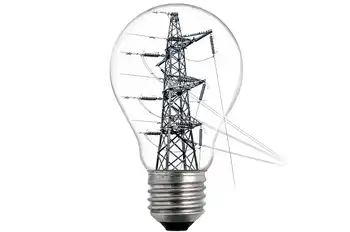Fusion receives major financial backing
By Globe and Mail
Arc Flash Training CSA Z462 - Electrical Safety Essentials
Our customized live online or in‑person group training can be delivered to your staff at your location.

- Live Online
- 6 hours Instructor-led
- Group Training Available
The company is making a $4-million investment in General Fusion, a Burnaby, B.C.-based startup that announced $19.5-million in new development capital, including some from Bezos Expeditions, the personal investment company of Amazon.com founder Jeff Bezos.
General Fusion ranks among Canada's most ambitious small companies, with a goal to create a new energy source that could have global application.
"This is the holy grail of energy," said founder Michel Laberge. "In 100 years, the whole planet will run on fusion."
Over the course of the last decade, Mr. Laberge has worked on a barebones budget to develop this technology, knowing he is attempting something that has eluded throngs of scientists around the world. The billions of dollars spent on similar attempts have, so far, failed.
Mr. Laberge, meanwhile, started building his own fusion prototype in an old gas station. General Fusion has since grown to 45 employees, including 10 with doctorates in plasma physics, and there are plans to add 20 more staff this year.
Yet the company's ambition remains a very long shot — even if the potential prize, the development of a mass energy source that could compete with coal on cost without any greenhouse emissions or nuclear waste, is enormous.
For Cenovus, the investment is tiny by corporate standards: It represents roughly a half-day's cash flow, and pales in comparison to the billions it is pouring into building its oil sands projects. But it carries some symbolic significance for a small company attempting to differentiate itself as a technical innovator in an industry criticized for not doing more to protect the environment. And if fusion works, it could help displace natural gas as the primary energy source for the extraction of bitumen that process has been compared to burning gold to make lead.
"If it works, it could potentially be applied in the oil sands operation," said Dave Hassan, team lead of environmental technology investments for Cenovus, which has also poured money into diesel emission reductions and well-abandonment technology. "And it may be something where we would actually want to become a fusion energy producer."
For General Fusion, it's much-needed new capital — the company has raised a total of $30-million to put toward developing the highly complex systems needed to make fusion power. Venture capitalists such as Chrysalix, GrowthWorks, Braemer Energy Ventures, Entrepreneurs Fund and SET Venture Partners have also contributed.
General Fusion is currently building full-scale components to show the systems will work. But the company is still years away from generating electricity.
"This is a long-term process. The reality is, before we've got a working power plant sitting here churning out electricity 24/7 for 30 years, there's going to be hundreds of millions — if not billions — needed to be invested. So we will be raising money again for some time," said Michael Delage, General Fusion's vice-president of business development.
Mr. Laberge is happy to tackle a problem no one else has yet solved. "I want to save the planet because we're going down the drain," he said. "Why do I attempt it where everybody else has failed? I must have a big head or something. I think I can beat the big guys."
Unlike nuclear power, which uses fission, or the breakup of atoms, to create electricity, fusion works by pressing atoms together. That has proven immensely difficult. It requires huge pressure and temperatures as high as 150-million degrees Celsius. ITER, a major international fusion plant being built in the south of France, carries an estimated $21-billion price tag, and is purely a demonstration project. It will take that project many more years — and many more billions — to build a commercial power plant.
General Fusion believes it can do that for far less — and far faster.
"We're saying that if we can do what we believe we can do, by four years from now we'll be in a position ITER can't possibly get to before 2035," said Mike Brown, chairman of energy venture capital company Chrysalix and one of the earliest investors in General Fusion. "Now, it's all dependent on whether these things work. And let's not kid ourselves — one of the reasons fusion is hard is because it's hard."
General Fusion has designed a system that uses a sphere surrounded by 200 pistons. Those pistons are designed to each hit within 10-millionths of a second, creating a simultaneous wave of pressure that helps create a fusion reaction. It hasn't been easy. Recent years have seen the company succeed in synchronizing the timing of piston strikes, but it has yet to create the force needed. The pistons must hit at 180 kilometres per hour, and so far, they have achieved 108 kph. Modifications are making progress, but they take time.











